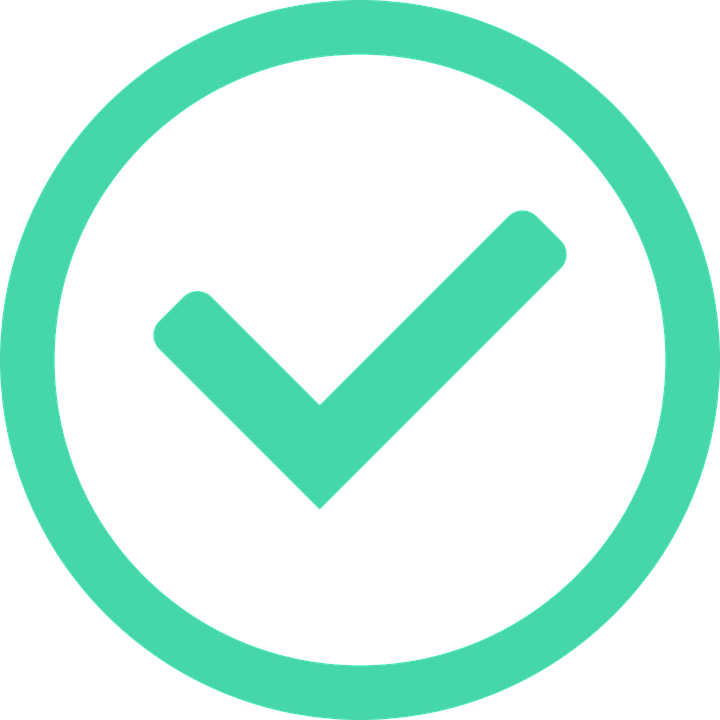Effective Reading Strategies
Reading for Clarity and Understanding
Andy Gurevich
Reading to Write

Good writing begins with good reading. Every time you read, you’re exposed to someone else’s ideas and to their way of writing: their word choice, vocabulary, knowledge base, use of language, and so forth.
How do you become a reader, or a better reader?
First, read every day. And vary the materials you read: a book, a magazine article, an online blog, etc. Try readings things that are a little challenging. In other words, don’t just vary the subject matter–vary the difficulty, too. Stretch!
Second, learn and practice the skills of effective reading (which are explained below in this section).
Third, keep reading. Every day. And use good effective reading skills.
Fourth, learn and practice the skill of reading critically. To learn more, see Reading Critically in the “Writing about Texts” section.
Fifth, keep reading. Yes, every day, putting your skills to work. (Practice makes perfect!)
Sixth, well, you know.
Reading effectively means reading in a way that helps you understand, evaluate, and reflect on a written text. As you might guess, these skills are very important to college students, no matter what field you’re going into: you’ll be doing a lot of reading. The more effectively you read, the easier it’ll be, the less time it will take, and the more you’ll enjoy the experience.
. . . . . . . . . . . . . . .
People who read effectively use a variety of skills and techniques:
- They start by creating an optimal setting for reading. They pick the best time, place, and conditions.
- They engage in pre-reading strategies before starting to read (see pre-reading strategies later in this section)
- They read material efficiently: they pick up a piece of material, engage actively with it, and finish.
- They create a reading environment that helps decrease distraction.
- They annotate written texts (in other words, they write directly on the texts) or take notes as they read. By doing this, they enter into a discussion with the text, interacting with it.
- They research or investigate content they don’t fully understand.
- They work to discover the central meaning of the piece. They ask themselves
- What is the author’s point?
- What is the text trying to say?
- What story is the author telling?
- How does the author create and build this meaning?
- They reflect on what the text means to them, internalizing the meaning:
- How am I responding to this text?
- Why am I responding that way?
- What does the text make me think about?
- What does this information mean to me?
Create an Optimal Setting for Reading
Stop for a moment and think about yourself and the act of reading. Whether you read headlines or social media posts on a smartphone or tablet, love to settle in with the Sunday paper, devour stacks of hand-held magazines and hard copy books, or read only when forced to, what does reading look like for you?
- Consider your ideal spot for reading. Is it a favorite chair in your living room? Your bed? A coffee shop? The cool green grass in a local park?
- What’s your favorite time of day for reading?
- Do you read best in silence? Or do you like to have music playing, be around other people, or have some other sort of active distraction?
- Do you prefer hard copy (printed) books, e-books, or audiobooks?
In each case, think about why you’re making each of these choices.
For instance, many college students read and study late into the night, perhaps because that’s the time they have available after work and family responsibilities or maybe because they’ve heard from others that all college students tend to study in the wee hours. Simple truth: not everyone reads most effectively at 2:00 am—or at 2:00 pm, for that matter. That’s not to say some people don’t do their best work late at night; the point is simply to really try and find when you study best—and then to make use of that.
Also, you may already know that the human body works via a series of diurnal cycles—cycles that move through peaks and valleys over each twenty-four hour period. During these cycles, levels of circulating hormones and chemicals rise and fall. Typically, this starts with a big chemical “push awake” in the morning, a peak of energy in the afternoon, and then a gradual lowering through the evening. Understanding these cycles can be helpful in finding effective times to read and study. This is important because as a college student, you’ll be doing lots of reading and studying, and if you can find the time at which these activities are most effective, you can cut your reading/study time in half while also finding it’s more enjoyable. And who wouldn’t like to spend less time studying? (I know, right?)
Location is important, too. Some folks work best in an absolutely silent setting, while others prefer the background noise of people, music, etc. You may find you read most effectively on your couch, in a library, or in a lawn chair in your backyard. My point here is that you shouldn’t just assume that a certain time and place are best for you. Experiment, trying out different settings for reading until you find the combination you know is best.
Once you’ve found that perfect setting, use it. Develop a routine of reading and studying at about the same time and in the same place as much as you can. Doing this will help the activity become a habit, and once that happens, it will be even easier—and more effective.
Here is a suggestion for those students with children, family obligations, pets, and other responsibilities: you may find you’ll need to remove yourself from your usual daily setting in order to get your reading done. We’ve heard many stories of people who can’t work at home because their dog, child, or partner are constantly interrupting them. This can be well-meaning, but even so, being interrupted when trying to read or study more or less destroys the process. Don’t hesitate to escape to a local coffee shop, a campus library (fact: most college libraries are open to the public), or another safe spot to get your work done. If you’re in an optimal setting, you’ll finish faster—and then you can get back to whatever else is on your list.
Use Pre-reading Strategies

licensed under CC-BY-SA-3.0 via Wikimedia Commons
When you’re ready to settle in with a text, it’s a good idea to begin with “pre-reading.” With pre-reading, you’ll turn into a temporary sleuth, examining the text for visual clues as to its meaning. Here’s how it’s done:
Start by Reading and Considering the Title
A good title will inform you about the text’s content. It’s always nice if titles are also interesting, catchy, or even clever, but the most important job of a title is to let the reader know what’s coming and what the text will be about.
For instance, imagine you’re reading a magazine article entitled “Three Hundred Sixty-five Properly Poofy Days.”*
Reading that, do you have any idea what this article is going to be about?
- It could be written by a meteorologist, reporting on a year of observing cloud formations.
- It might be a biopic (a biographical story) about an eccentric salon that specializes in“big hair” dos, retro-style.
- Or perhaps it’s a set of guidelines for using poofy cotton balls to apply cosmetics.
Would you be surprised to discover it’s a story about a dog groomer who does show grooms for poodles, the poofiest of dogs?
See my point? The title should, hopefully, give you clues to the article content. (Keep this in mind when you’re writing your own titles.)
- Look at the author’s name Have you heard of the author? Do you know anything about them? Sometimes you’ll find a short bio about the author at the beginning or end of a text. You can always Google them to look for more details. Ideally, the author should be an acknowledged expert on the subject or should have degrees, training, or credentials that make them an expert. (Learn more about the CRAP method for evaluating sources in the information literacy section titled “Finding Quality Texts.”)
- Skim through the article, looking for headings or “pull-outs” (content that is pulled off to one side or highlighted in a box). Headings, if present, will often give you clues as to the text’s content as well as showing you how the subject has been divided into sections.
- Look for any images: photographs, charts, graphs, maps, or other illustrations. Images—and their captions—will often give you valuable information about the topic.
- If working with an e-text, you may also find embedded web links. Follow these: they’ll often lead you to resources that will help you better understand the article.
- Here’s a seriously expert level suggestion: most academic texts and essays follow a fairly similar structure—including beginning every paragraph with a strong, focused topic sentence—you can often get a quick summary or understanding of a written text by simply reading the first sentence in every paragraph. Some authors may use the second sentence as their topic sentence, and if you notice this pattern, reading all of the second sentences in each paragraph will help you follow the text.
After working through the above suggestions, see if you can figure out the main purpose of the text simply by pre-reading. In other words, look for the global or central idea or argument.
Now, you’re ready to dive in and actually read the text completely. Your pre-reading has given you an overall picture of what to expect and helped you build a schema of what the author wants you to know at the end of the reading. If the pre-reading has worked well, giving you clues to the text’s content, your actual in-depth reading will be easier and more effective. And, you’ll begin reading with your curiosity already aroused, which is a great way to start!
 Check Your Understanding: Practicing Your Pre-reading Skills
Check Your Understanding: Practicing Your Pre-reading Skills
Now that we’ve covered some pre-reading practices, let’s put those skills to the test.
Find the Scientific American article, “U.S. Cracking Down on Brain-Training Games.”
- Before reading the article, work through the above pre-reading skills.
- Based on what you found in your pre-reading, what do you think the text is about? What position will the article take on the idea of brain-training games? How much do you know about the topic already? What did you already know (before you even looked at the article)?
- Now, switch to in-depth reading and read the article carefully, taking notes of any questions you have or words you don’t understand.
- If needed, do a bit of quick research on any questions or unknown words you identified.
- How did the pre-reading affect your ideas of what to expect from the text? How did your understanding of the piece compare between what you learned from pre-reading versus a complete reading? What does this tell you about the relationship between pre-reading and in-depth reading?
See the Appendix, Results for the “Check Your Understanding” Activities, for answers.
(adapted, in part, from The Word on College Reading and Writing by Carol Burnell, Jaime Wood, Monique Babin, Susan Pesznecker, and Nicole Rosevear. This OER text is licensed under a Creative Commons Attribution-NonCommercial 4.0 International License, except where otherwise noted.)

